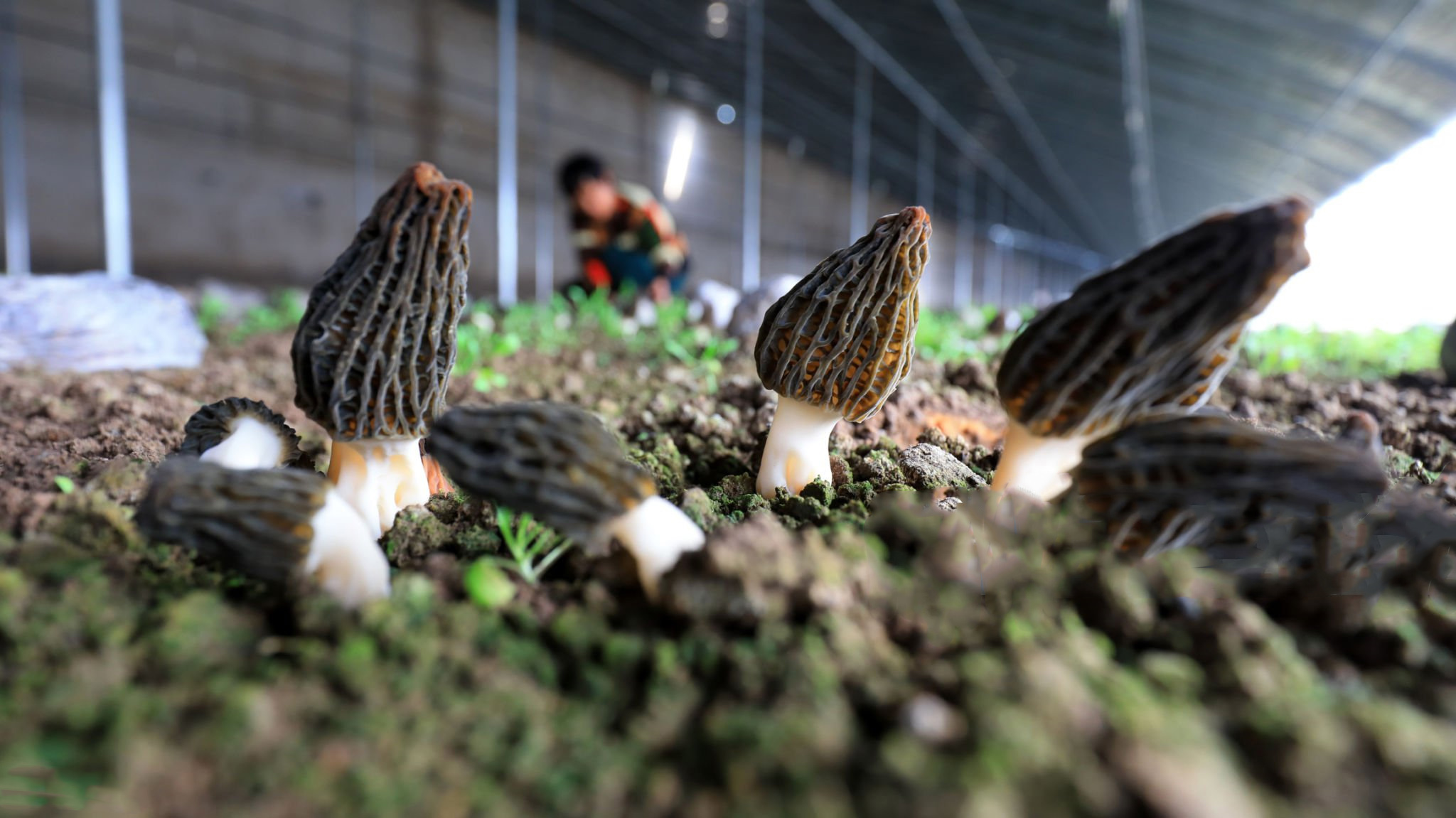
Key Considerations and Soil Preparation for Morel Cultivation
Artificial cultivation of morel mushrooms is both profitable and risky. The industry adage states, "30% depends on the spores, 70% on management."
As the new planting season approaches, here are some critical technical points and precautions for morel cultivation.
1. Soil Preparation
The soilŌĆÖs properties and preparation are fundamental to successful morel cultivation. The primary goal of soil preparation is to optimize the environment
and support the growth of mushroom spores.
Forest Land Treatment: Apply approximately 60kg of quicklime per acre to eliminate pests and adjust soil pH levels.
Farmland Treatment: Apply 90kg of plant ash and 60kg of quicklime per acre to regulate soil conditions.

Steps:
Begin tilling the soil 30 days before planting, followed by 10 days of sun exposure to eliminate harmful substances and promote better planting conditions.
Improve soil aeration to enhance spore growth.
Ensure a shading rate of around 95% when constructing planting shelters. Low shelters (approximately 0.75m high) are suitable for forested areas,while medium shelters (2m high) are ideal for larger-scale planting.
2. Selection of Cultivation Sites
Choosing a high-quality site is crucial for high-yield morel cultivation. Keep these points in mind:
Geographic Conditions:
Select demonstration bases at altitudes of 1,600ŌĆō1,700m.
Ensure an ample water supply and convenient transportation, with participation from labor-cooperative organizations.
Environmental Requirements:
The cultivation site should be clean, with fresh air and unpolluted water.
Ensure low pesticide residue levels, flat terrain, and low transportation costs to reduce overall planting expenses.
Soil Requirements:
Opt for slightly alkaline to mildly acidic red, yellow, or black sandy loam soils.
Idle or virgin land is preferred, avoiding waterlogging areas.
Wind Protection:
Avoid windy areas to prevent dehydration and shrinkage of mushroom caps during the young mushroom stage.
Pesticide Prohibition:
Do not use pesticides for weed or pest control within six months before planting or during the entire cultivation process.
3. Key Precautions During Morel Cultivation
Land Preparation
Plow the selected field in advance, sun-dry it for several days, then flood it with water. Apply appropriate amounts of lime to sterilize and eliminate pests.
After the soil dries, use a micro-tiller to break it into fine, even particles, ensuring optimal conditions for spore respiration.
Boxing and Ditching
Morels are aerobic fungi. Proper ditching and boxing enhance soil aeration, support mycelial growth, and improve drainage.
Shelter Construction
Maintain a shelter height of 2 meters. Supporting columns should be 2.5 meters high and buried 50cm underground, spaced 3 meters apart.
Use dense six-needle shade nets with solid overlaps to ensure stability and a proper shading rate.
Sowing
Choose either row or broadcast sowing methods. Regardless of the method, distribute the spores evenly, covering them with 3ŌĆō5cm of soil.
Water immediately after sowing.

Nutrient Bag Placement
Place nutrient bags approximately seven days after sowing. Poke small holes on one side of each bag using a thin stick, ensuring the perforated side faces downward.
Standard boxes should contain two rows of nutrient bags spaced 0.5m apart. Larger boxes can accommodate additional rows as needed.
Contamination Prevention for Nutrient Bags
Thorough Sterilization: Soak raw materials (grain and sawdust) for 24 hours to ensure full absorption, adding 1% lime to adjust the pH to around 8. Sterilize the bags at 100Ōäā for 8 hours.
Proper Placement: Ensure the bagŌĆÖs perforated side is tightly pressed against the soil to promote rapid mycelial growth.
Temperature Control: Maintain the temperature inside the shelter between 5ŌĆō22Ōäā. Use six-needle shade nets or black mulch to prevent direct sunlight on the nutrient bags.
Routine Inspection: If contamination occurs, address it promptly. For partially contaminated bags, continue monitoring. Severely contaminated bags should be removed immediately, and the area treated with quicklime to prevent further spread.By implementing these technical points, you can provide a solid foundation for successful morel cultivation, ensuring high yields and profitability.










